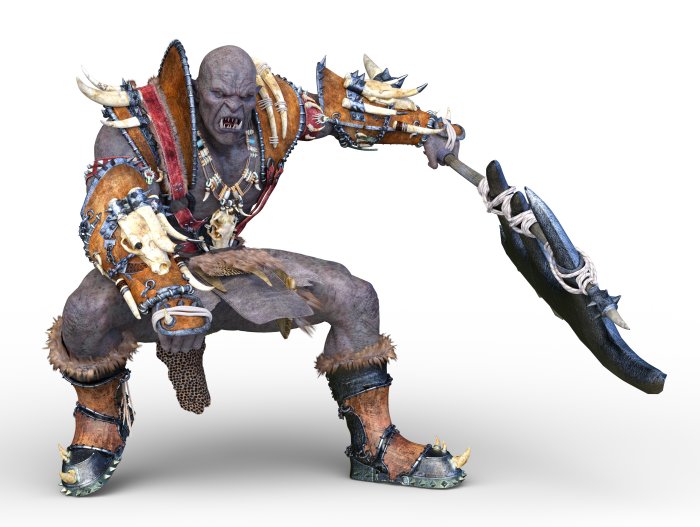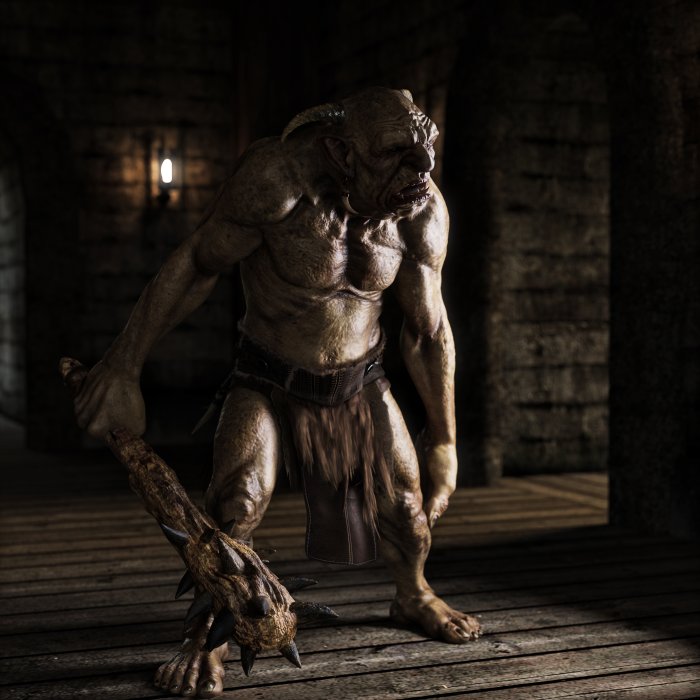Fomorians In Irish Myths And Legends: Race Of Demonic Giants Who Inhabited Ireland And Scotland
A. Sutherland - AncientPages.com - Celtic tradition describes the Fomorians as terrifying giant creatures, horribly deformed and often mistaken for demons.
It is said that this race of ugly beings descended from Noah's son Ham, whom Noah had cursed, and on account of this terrible curse, the Fomorians became one-legged and one-armed monstrous beings.
The Fomorians were superstitious and tyrannical; the people they conquered were either enslaved or forced, a crippling tribute of two-thirds of all children and cattle born.
Credit: Adobe Stock - tsuneomp
One Fomorian with stubby legs and long arms did not resemble another with a dwarfish right arm and a standard left arm or another with two or even three heads and only one eye or three on his head.
According to Fomorian beliefs, a child without any mutation is born without a noticeable personality. They were only accustomed to seeing their own mutated bodies, and a child born "normal" with all fingers and toes was doomed to be killed as a monster.
The Fomorians (Old Irish: 'Fomoire') is a supernatural race in Irish myths. These giants were associated with the powers of nature, such as fog, storms, winter, and disease.
They were said to have come from the sea or under its surface and were some of the earliest inhabitants of the British Isles, occupying both Scotland and Ireland.
Ireland had never seen anything more terrifying than the army of prehistoric Fomorians, who mercilessly raided and plundered Ireland from the sea.
The term 'Fomorian' was analogous to - disease, plague, and disaster.
The king of the Fomorians was Balor, a giant with an eye in the middle of his forehead.
According to tradition, they conquered the first invaders of Ireland - the Partholón (or "Parthalán") people who invaded Ireland and settled there, introducing cattle, building houses, and making all four plains cleared and habitable. After some years, they all died of the plague in a week.
Thirty years later came the Nemeds, who, like those who settled Ireland before him, had a genealogy going back to the biblical Noah. The Nemeds managed to win four battles with the Fomorians, but after nine years, thousands of the Nemeds died of the plague.
The mysterious Fomorians were again victorious until the Firbolgs, the third group of invaders, arrived and subdued the Fomorians. Firbolgs were the earliest historic race in Ireland. They were pastoral people of Greek or Eastern origin. Researchers believe they originated from a branch of the great Celtic race, which passed through Europe, rounded the continent's shores, and finally, made Ireland their resting place.
Credit: Adobe Stock - Digital Storm
The Firbolgs (from "Fir Bholg" – the "Men of Bags or Sacks") had a name given to them during their Greek exile. They lived peacefully with the Fomorians and most probably focused their lives on agriculture. They were forced to make arable land by covering rocks with earth, which they carried in bags.
They also preferred to avoid contact with other sentient races. They were both the most intelligent and powerful of the giant race.
The Tuatha De Danann defeated the Irish giants and attempted to forge a ceasefire with the Fomorians.
This attempt failed due to treachery from one side that resulted in a terrible war between the two races that ended in the Fomorians' downfall.
Written by – A. Sutherland AncientPages.com Senior Staff Writer
Updated on May 24, 2023
Copyright © AncientPages.com All rights reserved. This material may not be published, broadcast, rewritten or redistributed in whole or part without the express written permission of AncientPages.com
Expand for referencesMore From Ancient Pages
-
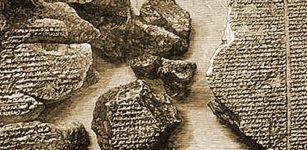 On This Day In History: Chaldean Account Of The Deluge Translated And Presented For The First Time – On Dec 3, 1872
News | Dec 3, 2016
On This Day In History: Chaldean Account Of The Deluge Translated And Presented For The First Time – On Dec 3, 1872
News | Dec 3, 2016 -
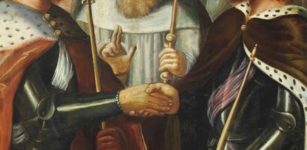 On This Day In History: Treaty Of Picquigny – Negotiations Between England And France – On Aug 29, 1475
News | Aug 29, 2017
On This Day In History: Treaty Of Picquigny – Negotiations Between England And France – On Aug 29, 1475
News | Aug 29, 2017 -
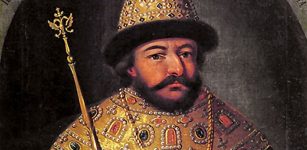 Controversial Ruler Tsar Boris Godunov’s Exact Date Of Birth Determined By Scientists
Archaeology | Aug 31, 2021
Controversial Ruler Tsar Boris Godunov’s Exact Date Of Birth Determined By Scientists
Archaeology | Aug 31, 2021 -
 On This Day In History: Naval Battle Of Rennell Island Fought Off Guadalcanal – On Jan 29, 1943
News | Jan 29, 2017
On This Day In History: Naval Battle Of Rennell Island Fought Off Guadalcanal – On Jan 29, 1943
News | Jan 29, 2017 -
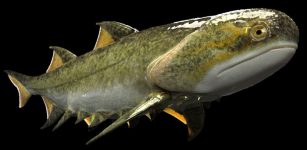 Humans’ Oldest Jawed Ancestor Is A 439-Million-Year-Old Spiky Shark – Surprising Discovery Shows
Archaeology | Sep 29, 2022
Humans’ Oldest Jawed Ancestor Is A 439-Million-Year-Old Spiky Shark – Surprising Discovery Shows
Archaeology | Sep 29, 2022 -
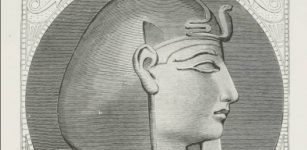 Pharaoh Merneptah – His Giant Sarcophagus And Unique Victory Stele
Featured Stories | Apr 17, 2018
Pharaoh Merneptah – His Giant Sarcophagus And Unique Victory Stele
Featured Stories | Apr 17, 2018 -
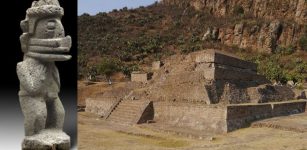 Who Built The Mysterious Huapalcalco Pyramid – Mexico’s Smallest Pyramid?
Featured Stories | Mar 29, 2018
Who Built The Mysterious Huapalcalco Pyramid – Mexico’s Smallest Pyramid?
Featured Stories | Mar 29, 2018 -
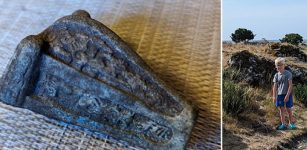 8-Year-Old Boy Finds Unusual Viking Age Artifact On Gotland Island, Sweden
Archaeology | Sep 18, 2023
8-Year-Old Boy Finds Unusual Viking Age Artifact On Gotland Island, Sweden
Archaeology | Sep 18, 2023 -
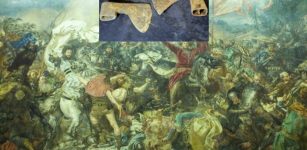 600-Year-Old Axe Heads Used In The Battle Of Grunwald Found in Poland
Archaeology | Sep 1, 2020
600-Year-Old Axe Heads Used In The Battle Of Grunwald Found in Poland
Archaeology | Sep 1, 2020 -
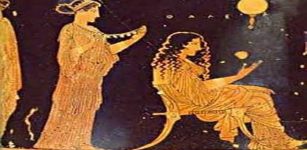 Aglaonice (Aganice): Female Greek Astronomer From Thessaly Was Believed To Be A Witch
Featured Stories | Sep 4, 2019
Aglaonice (Aganice): Female Greek Astronomer From Thessaly Was Believed To Be A Witch
Featured Stories | Sep 4, 2019 -
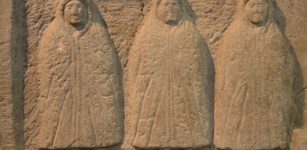 Mystery Of The Hooded Ones – Enigmatic Cloaked Figures
Artifacts | Feb 10, 2020
Mystery Of The Hooded Ones – Enigmatic Cloaked Figures
Artifacts | Feb 10, 2020 -
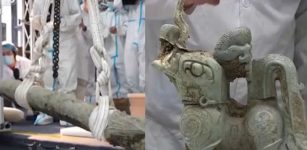 Statue Of Unknown Mythical Beast With Four Wings Discovered
Archaeology | Sep 1, 2022
Statue Of Unknown Mythical Beast With Four Wings Discovered
Archaeology | Sep 1, 2022 -
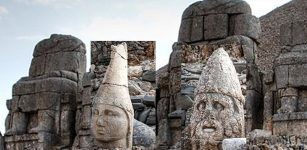 Mount Nemrut: ‘Throne Of The Gods’ – Mysterious Royal Tomb Surrounded By Gigantic Sculptures
Civilizations | Nov 16, 2018
Mount Nemrut: ‘Throne Of The Gods’ – Mysterious Royal Tomb Surrounded By Gigantic Sculptures
Civilizations | Nov 16, 2018 -
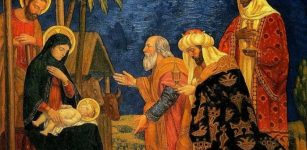 Did The Biblical Magi Bring Jesus Gifts With Healing Properties?
Biblical Mysteries | Dec 24, 2017
Did The Biblical Magi Bring Jesus Gifts With Healing Properties?
Biblical Mysteries | Dec 24, 2017 -
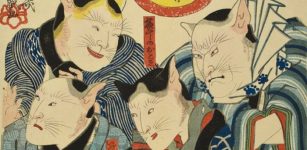 Why Were Actors Painted As Cats By Ukiyo-e Artists In Japan?
Ancient History Facts | Feb 11, 2020
Why Were Actors Painted As Cats By Ukiyo-e Artists In Japan?
Ancient History Facts | Feb 11, 2020 -
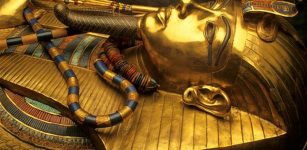 Tests On Tutankhamun’s Tomb: Non-Invasive Radar Search For Nefertiti To Start Thursday
Archaeology | Nov 23, 2015
Tests On Tutankhamun’s Tomb: Non-Invasive Radar Search For Nefertiti To Start Thursday
Archaeology | Nov 23, 2015 -
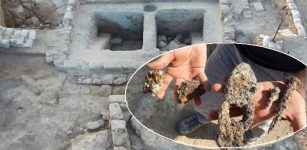 1,400-Year-Old Iron Hammer And Nails Among Findings At Sanhedrin, Western Galilee’s Usha
Archaeology | Nov 6, 2019
1,400-Year-Old Iron Hammer And Nails Among Findings At Sanhedrin, Western Galilee’s Usha
Archaeology | Nov 6, 2019 -
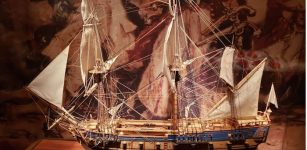 Mystery Of The Coal On The Pirate Shipwreck Queen Anne’s Revenge Solved
Archaeology | Apr 13, 2023
Mystery Of The Coal On The Pirate Shipwreck Queen Anne’s Revenge Solved
Archaeology | Apr 13, 2023 -
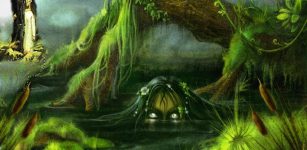 Evil Spirits And Demons Of Marshes And Swamps In Slavic Folklore
Featured Stories | Nov 16, 2016
Evil Spirits And Demons Of Marshes And Swamps In Slavic Folklore
Featured Stories | Nov 16, 2016 -
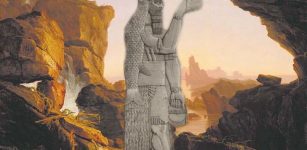 Was Alulim, First King Of Sumer And Eridu Biblical Adam?
Biblical Mysteries | Mar 14, 2019
Was Alulim, First King Of Sumer And Eridu Biblical Adam?
Biblical Mysteries | Mar 14, 2019

